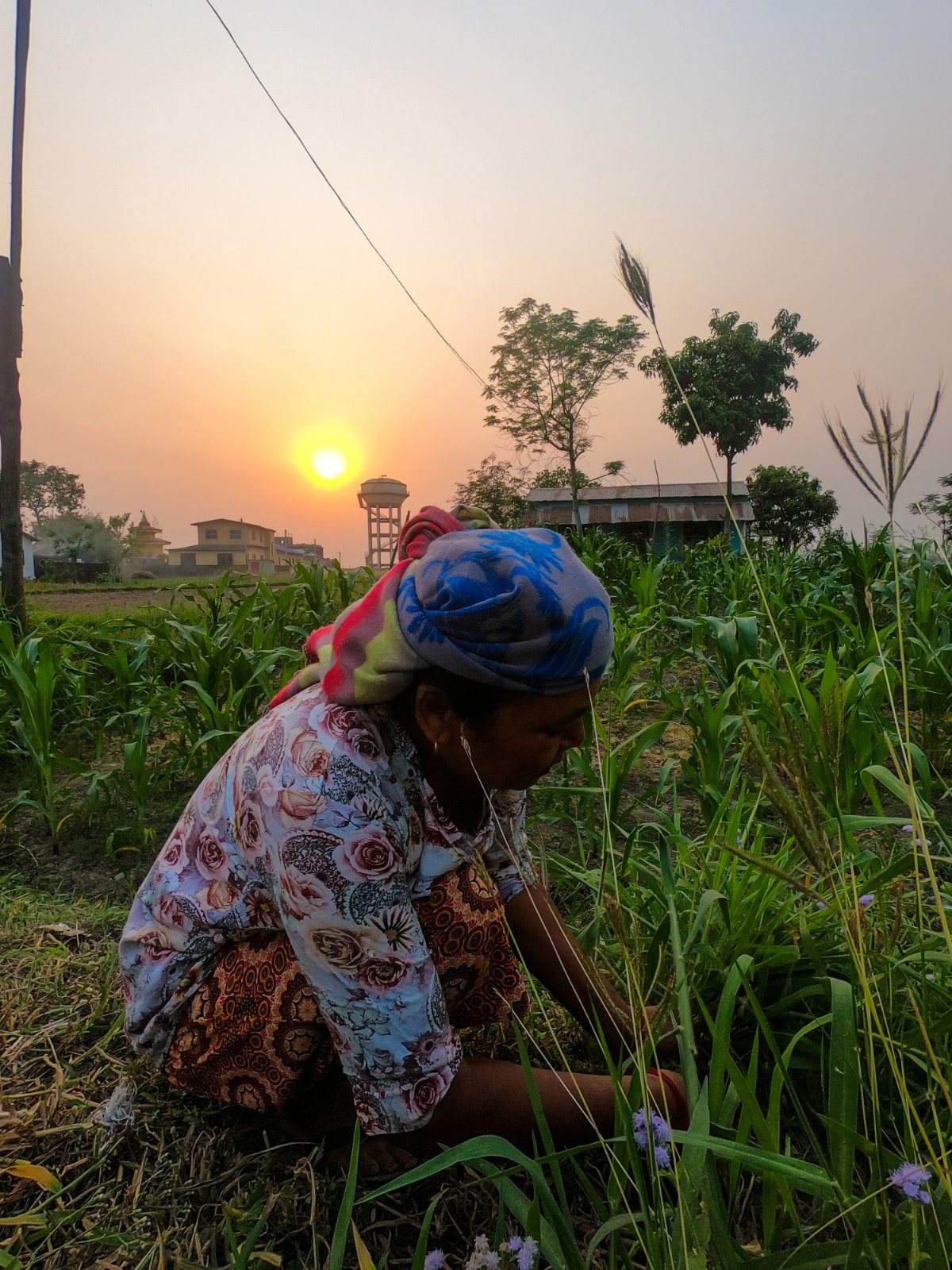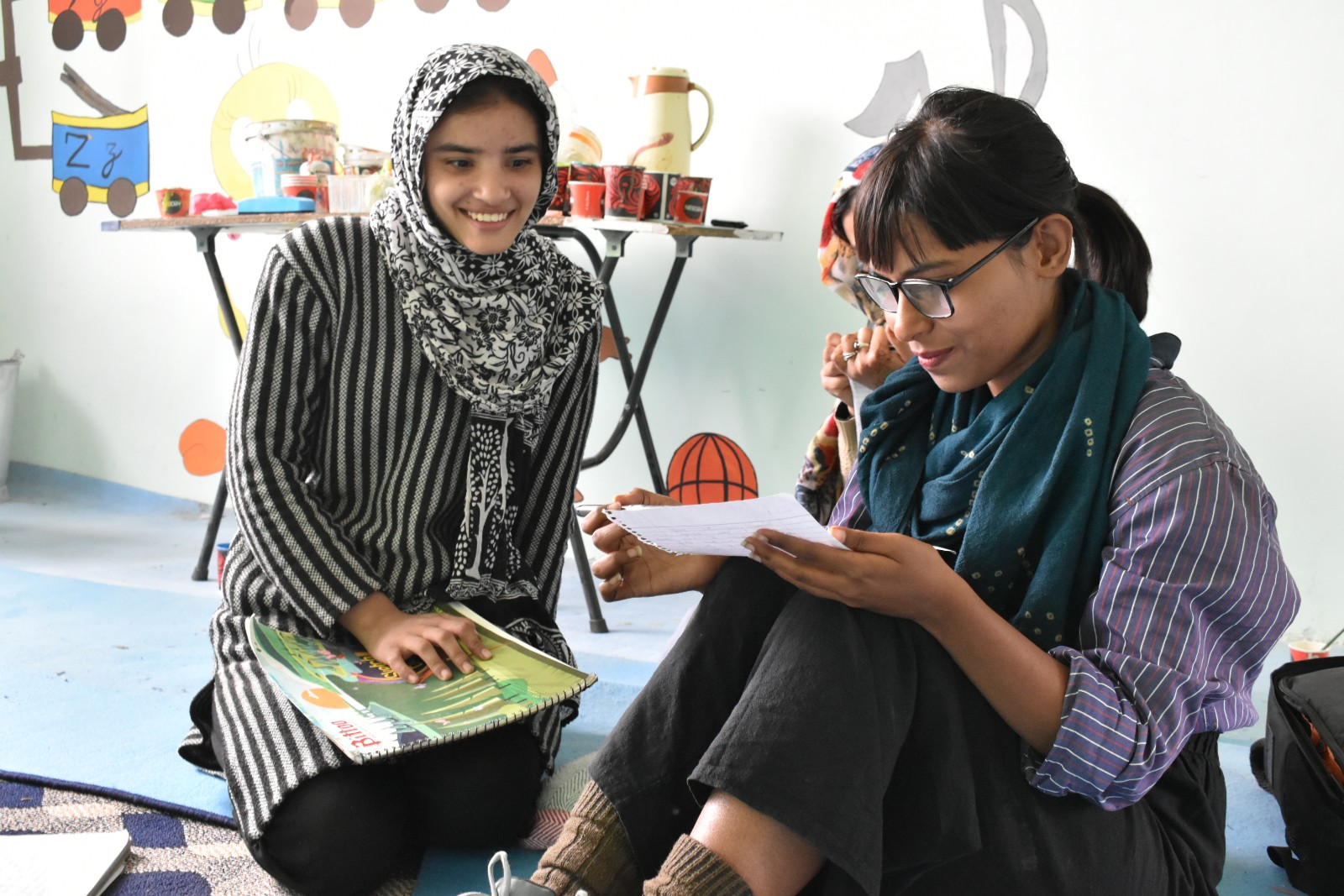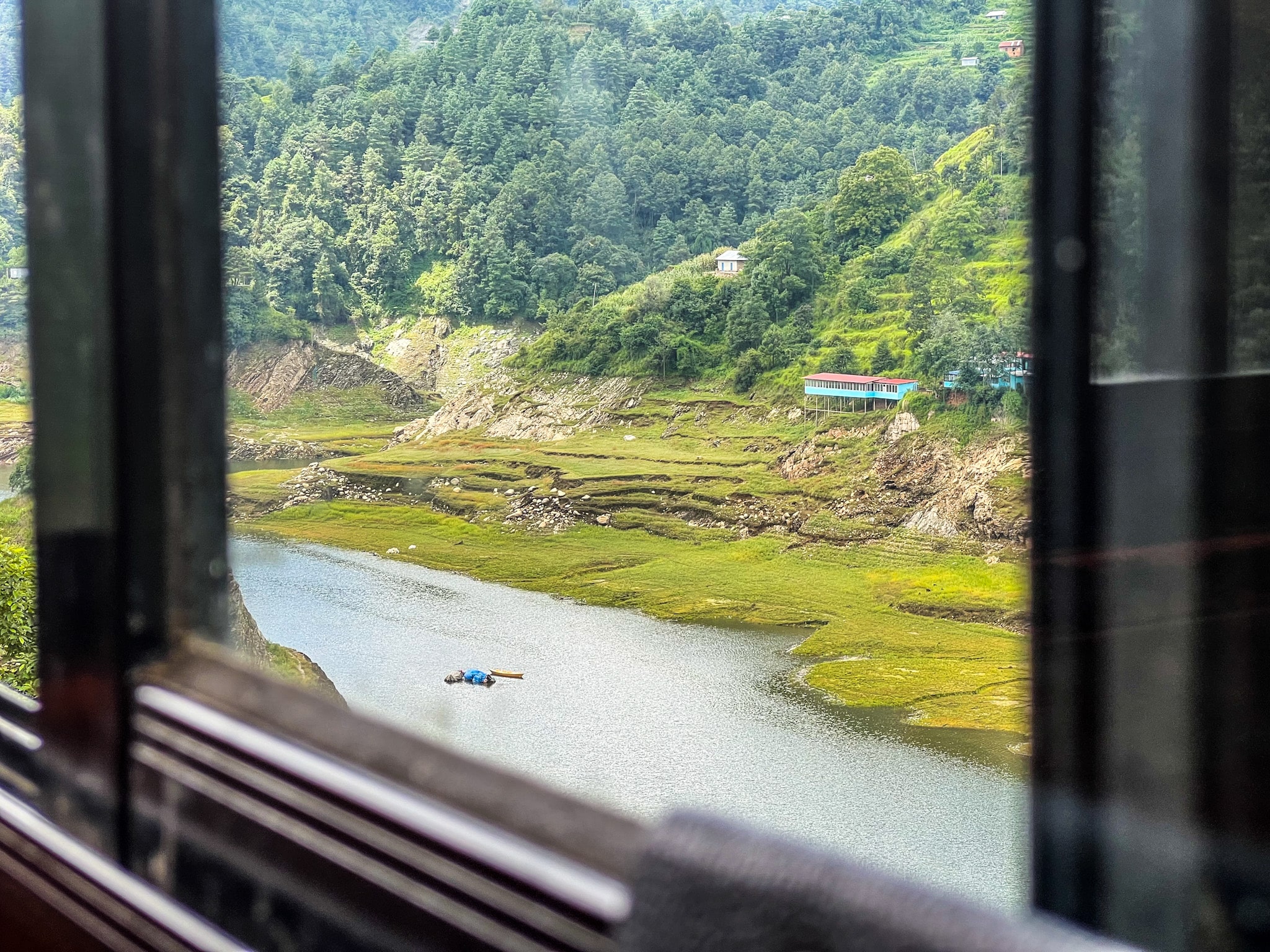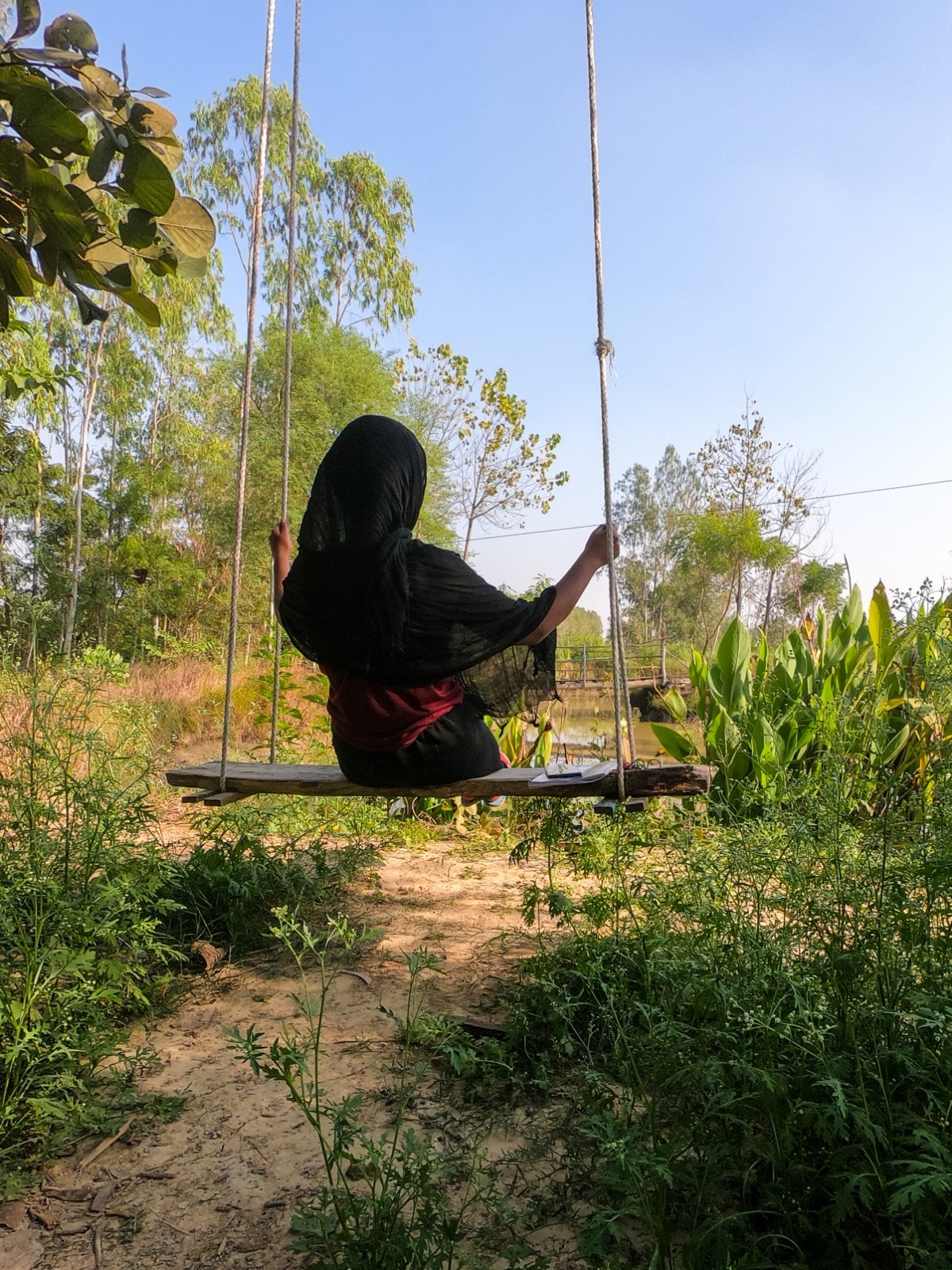‘Tharu’ Ethnic Tribe of Patalhara Worships A Broom
The visible white mark made a stretched arrow on her extra-tanned right leg, vertically, at the intersection of the ankle and the feet, like a different patch of cotton sewn to her stubborn skin. Fingers tucked around a steel teacup, she folded her long red flowery dress knee-length, in a tilted hesitation. Her swallowed face, a touch-and-go between unenthusiastic expressions. She is still recovering from a potential snakebite.
The Tharu tribe of Nepal practices wild foraging and worships nature’s guardians in the inscrutable depth of their natural connections. They are the ‘People of the Forest’. On a compulsive rainy day, she found herself lying unconscious by a bush, as she went inside the opaque jungle to collect some wild plants. She doesn’t know what bit her.

This is Patalhara, a settlement of an indigenous ethnic community known as the Tharus in the Terai. They connect themselves with various origins either as the original descendants of Gautama Buddha or the 16th-century migrated Rajputs from the Thar desert in India. But their landscape has always been the wild, practicing short fallow shifting cultivation, and growing rice, wheat, mustard, maize, and lentils. Their distinct Tharu dialects mingle with the culture-specific Sakhiya dance of the unmarried and Lathi Nach (Stick Dance) performed during the Dashain festival.
‘Most of the Tharu people used to name their sons as Thagayi. The parents thought that God had given them a son only to cheat them, because sooner or later, he will die. Cheating in Nepali is Thag.’ Shreeram Devkota, a Brahmin who expended his lifetime in a Tharu village, pointed at the wattle walls and traditionally thatched roofs covered with gourd creepers. He is also my host and interpreter.
On light-brown monotone walls, some pink handprints laid in three rows. It looked like a paste of flour and colours. A Tharu woman brooming the narrow backstreets tells me how these handprints spook out bad demons from entering the house.
Also read – The India-Nepal Border Crossing Via Gorakhpur
Tharu’s Strife with Malaria & Resistance
In the 1950s, the Terai region underwent one of the most detrimental bites of Malaria that threatened the foothold of these deep-rooted clusters. To survive such a malignant blow, the Tharus always had to tidy up their thresholds, clean up any piled-up mess and stay together in blocks. The Tharus of Patalhara worship a broom, placed inside a tin-roofed makeshift temple, as God. ‘Because without jharu (broom), they wouldn’t have survived. And they think that the broom might be the God to save their lives.’

Not just a broom, they offer offerings to traditional farming tools like Borshi, Jha jha. Dihuri, Dhimmar, Khongo… every metallic thing used in the family. Shreeram recalls how when he was a young boy of 16, the Tharus would call him out for a feast by a wintry ghora (fire). ‘Every single thing used to have a chicken. One chicken for sickle, one chicken for plough… There used to be seven, eight, nine chickens…’ But now the offerings have become more economized. Only on special days like Pitrionsi, do they offer to God.
Tharu houses are enclosed; solid and tight-lipped with no windows. Without ventilation, the cooking fire would get entrapped into the interiors, a strategy to escape the malaria mosquitoes. As their tradition had always been badaghar, a culture of 20-30 family members sharing a common room together, the smoke-trapping supposedly kept them guarded.
Many medical studies have reportedly shown that compared to other ethnic groups in the vicinity, Tharus have seven times more genetic resistance towards Malaria. Their gripe about Malatia ended with a collaborative initiative of WHO and the Nepalese government in the late 1950s. With the malaria eradication programme using DDT in the 1960s, the self-sufficient Tharu tribe started to receive an open and heterogeneous influx of non-Tharu people from the Nepalese hills and the Indo-Gangetic plains of Terai.
With the burgeoning external ballooning, the Tharus succumbed to the system of Kamaiya, a contractual relationship of bonded labour. Some eventually declared themselves as ‘voluntarily landless’.
Also read – Thunderstorm at Australian Camp While Solo Camping in Nepal
How Creating A National Park Affected the Tharu Tribe

‘Inside the Chitwan National Park, there’s a temple of their God Vikram Baba. And when a son was born, they used to keep the name of Vikram. Because in the name of God, he will survive’, Shreeram tells me, as a newborn Tharu child crawls down from her mother’s lap onto a paddy straw mat, ‘And if it’s a girl, they would name her Vikramiya.’
Chitwan National Park is Nepal’s first well-established National Park, a UNESCO Heritage Site since 1984, with its promising conservation of 68 different mammals, including Bengal Tiger, leopard, sloth Bear, hyenas, and more. As of 2015, Chitwan had the largest population of Indian rhinoceros in Nepal. In the midst of these animal protective measures, what happened to the forest-dwellers who co-lived with the wildlife for hundreds of years?
With the establishment of a ‘National Park’ and the construction of the East-West Highway, the Tharus were forced to relocate from their traditional roots, in a state of denial of ownership of land. Largely upper-caste Hindus such as Brahmins, Chettris and Thakuris started to migrate to Tharu regions. Nepalese soldiers were assigned to the National Park to destroy these tribal clutters, burn down houses, and beat the natives claiming what was always theirs under the conservation objectives. How could they speak at the gunpoint?
Now the majority of the Chitwan Tharu population has refurbished their lives in villages outside and around the stigma of a jungle that once gave them the means of co-existence with a ruggedness prominent with tourism and conservation.
Also read – A Vegetarian’s Guide to Newari Food in Kathmandu
How You Can Visit A Tharu Village in Chitwan

Over the course of time, Tharu villages have found representation through rural tourism in Nepal. Many villages around Lumbini offer cultural tours of authentic Tharu villages, giving the outsiders an opportunity to explore Tharu life. Traditional ethnic food, local music & dance, architecture, handicrafts – in a village called Jagadishpur Jalasaya near Tilaurakot, a homestay program invites tourists to 13 houses with basic amenities and organic Tharu dishes.
Betahani is another such village, not far from the gates of Tiger Tops. You can even take a regular tour or a cycle tour to Badrahani Village near Sauraha in Chitwan. Nana Jungle Resort provides Tharu Cultural Tour Packages for 3 days of cultural exploration! Diverting from Nepal’s autonomous tourist destinations like Kathmandu, Pokhara and Lumbini, staying in a Tharu village would support the tribal community, bring light to an indigenous culture and cultivate a new sense of understanding. You can even visit Tharu Cultural Museum, Nepal’s first community museum in Sauraha!
This article was originally written by me for India Outbound – March-April Edition 2024 (Print Version). I am also thankful to the principal of the school where I volunteered for two weeks, Shreeram Devkota, for being the interpreter.
When in Chitwan, make sure to spend a few nights in a Tharu village for a unique experience in Rural Nepal!
Follow my solo adventures on YouTube, Instagram and Patreon.




Leave a Reply